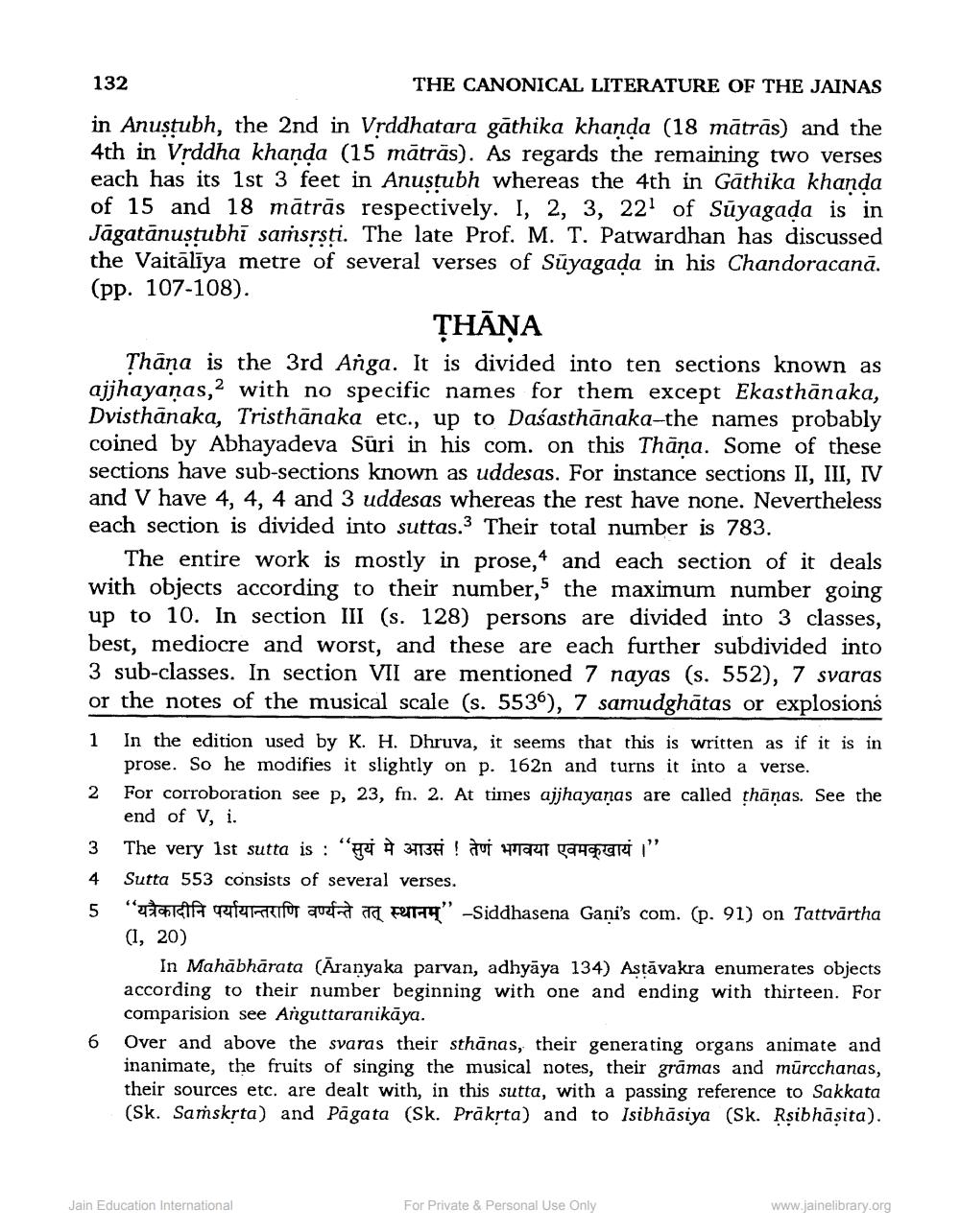________________
132
THE CANONICAL LITERATURE OF THE JAINAS
in Anustubh, the 2nd in Vrddhatara gāthika khanda (18 mātrās) and the 4th in Vrddha khanda (15 mātrās). As regards the remaining two verses each has its 1st 3 feet in Anustubh whereas the 4th in Gāthika khanda of 15 and 18 mātrās respectively. I, 2, 3, 22 of Süyagada is in Jāgatānustubhī samsrsti. The late Prof. M. T. Patwardhan has discussed the Vaitālīya metre of several verses of Süyagada in his Chandoracană. (pp. 107-108).
THĀŅA Thana is the 3rd Anga. It is divided into ten sections known as ajjhayaņas, 2 with no specific names for them except Ekasthānaka, Dvisthanaka, Tristhānaka etc., up to Daśasthānaka-the names probably coined by Abhayadeva Sūri in his com. on this Thāna. Some of these sections have sub-sections known as uddesas. For instance sections II, III, IV and V have 4, 4, 4 and 3 uddesas whereas the rest have none. Nevertheless each section is divided into suttas.3 Their total number is 783.
The entire work is mostly in prose, and each section of it deals with objects according to their number, 5 the maximum number going up to 10. In section III (s. 128) persons are divided into 3 classes, best, mediocre and worst, and these are each further subdivided into 3 sub-classes. In section VII are mentioned 7 nayas (s. 552), 7 svaras or the notes of the musical scale (s. 5536), 7 samudghātas or explosions 1 In the edition used by K. H. Dhruva, it seems that this is written as if it is in
prose. So he modifies it slightly on p. 162n and turns it into a verse. 2 For corroboration see p, 23, fn. 2. At times ajjhayanas are called thāņas. See the
end of V, i.
The very 1st sutta is : " 37138 ! qui payt yayari.” 4 Sutta 553 consists of several verses. 5 " A oferitor que TEL FUTT." -Siddhasena Gani's com. (p. 91) on Tattvārtha (1, 20)
In Mahābhārata (Āranyaka parvan, adhyāya 134) Astāvakra enumerates objects according to their number beginning with one and ending with thirteen. For comparision see Anguttaranikāya. Over and above the svaras their sthānas, their generating organs animate and inanimate, the fruits of singing the musical notes, their grāmas and mūrcchanas, their sources etc. are dealt with, in this sutta, with a passing reference to Sakkata (Sk. Saṁskṛta) and Pāgata (Sk. Prākrta) and to Isibhāsiya (Sk. Rsibhāsita).
Jain Education International
For Private & Personal Use Only
www.jainelibrary.org




